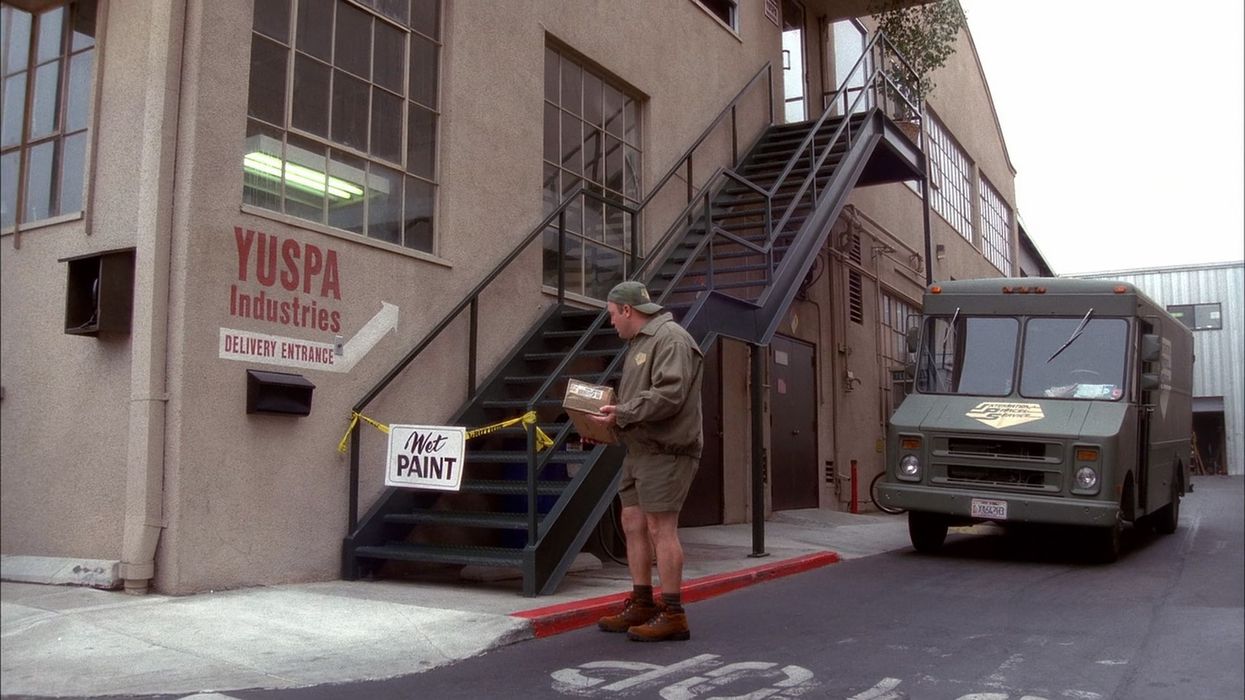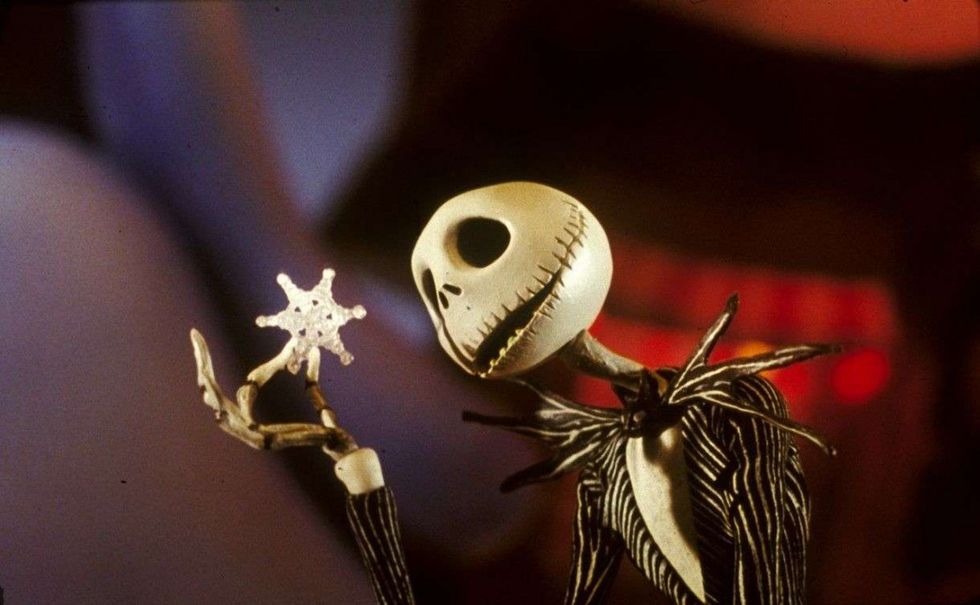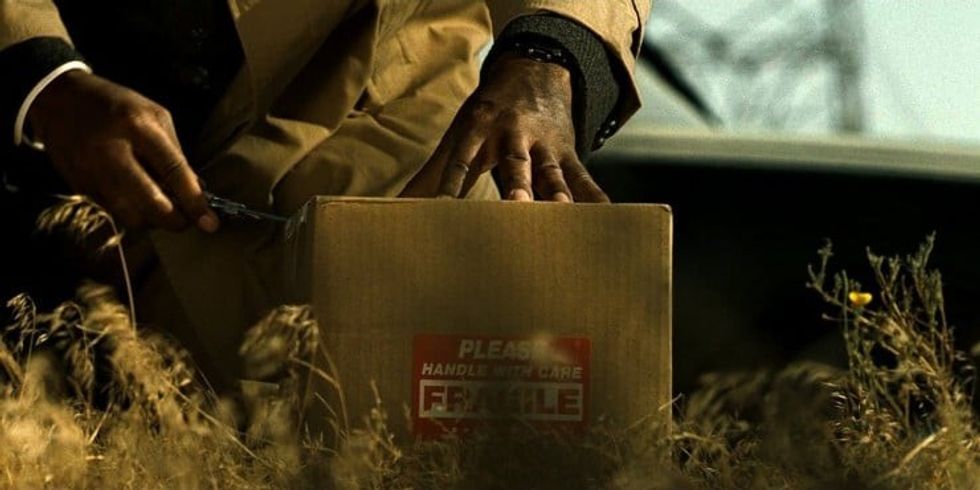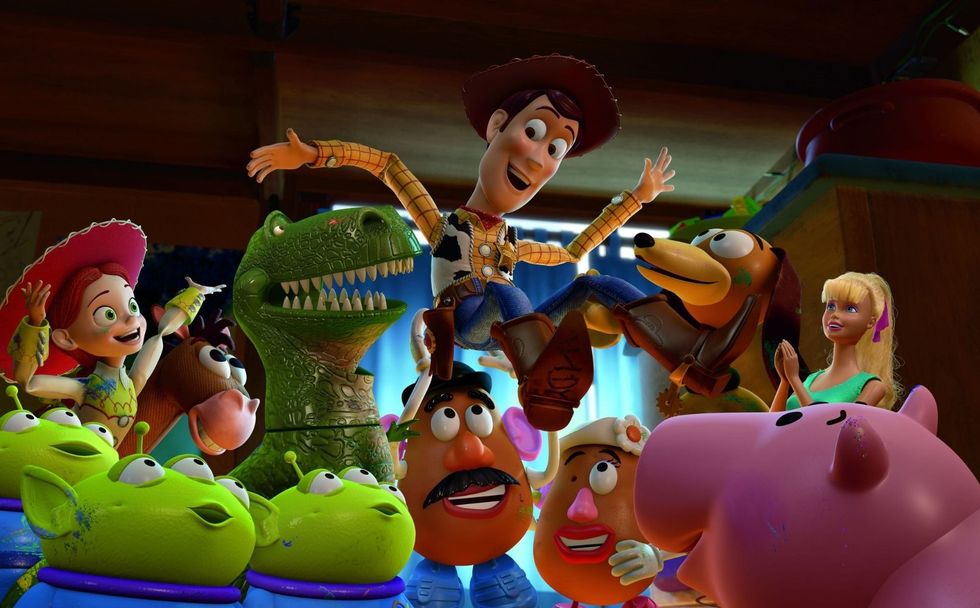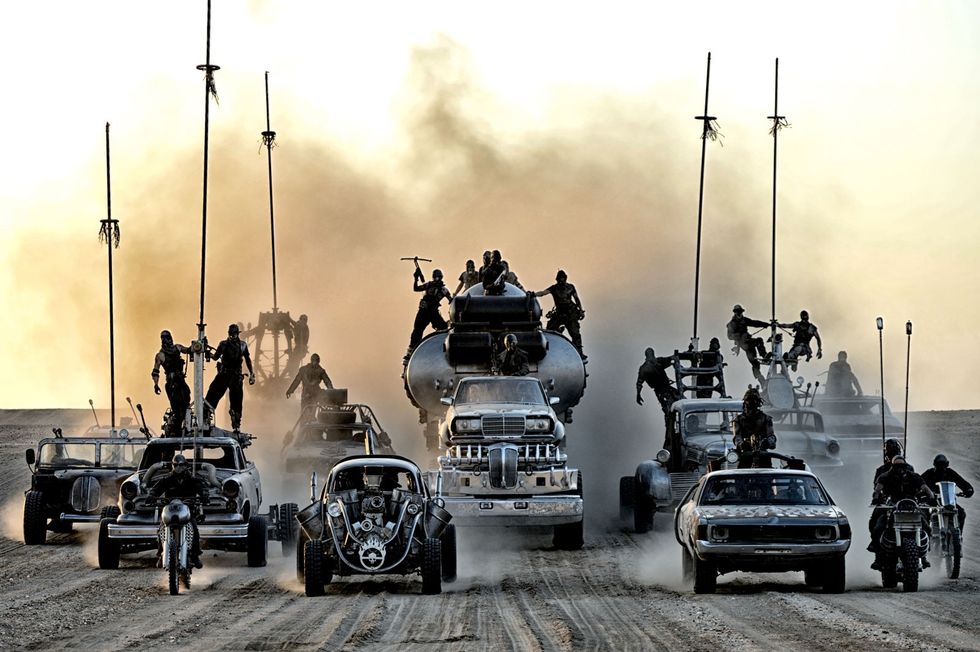Inside the 8-Day Production of the Subversive & Entertaining 'A Wonderful Cloud'
What's the weirdest movie you saw at SXSW? A Wonderful Cloud is a fun, weird and indelible story of a former off-screen couple, Eugene and Kate, energetically playing out their real-world baggage.
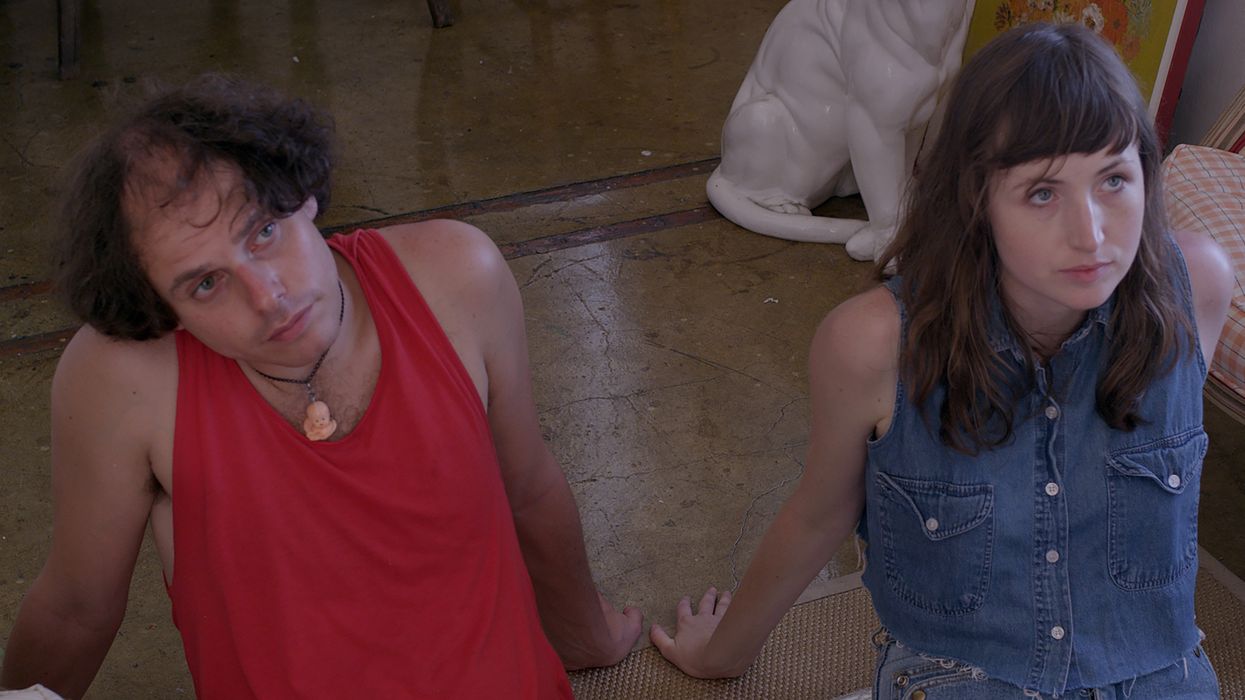
We spoke with director Eugene Kotlyarenko while at this year's SXSW. We immediately find Eugene in the hotel lobby, adorned with an outfit that makes him look like a space cowboy. The sarcasm running thick:
First, check out the trailer to A Wonderful Cloud.
Eugene: The major misconception about the movie is that everything in it is real, right. That I'm actually balding, that the poop was real, that I was really eating pussy and that the cum was real. We made that poop; the poop is insulated rubber foam that was painted by the production designer. The cum is Cetaphil mixed with some other liquid --
Vish: Lube --
Eugene: Me being bald is literally the production designer painstakingly gluing each strand over a bald prosthetic cap that I continue to wear throughout the festival. We obviously used a lot of the 3 million dollar budget to do a lot of the prosthetics and stuff, and we are also post converting, because we did get an additional $10 million to convert to 3D. The festivals weren't equipped for that.
NFS: What was the process like working with Kate?
Eugene: It's really a collaboration. I'm exploiting her for sure and she's exploiting me and I think that's what people who are talented who get to hook up -- not sexually but creatively -- do, they exploit each other's strengths. They help eliminate each other's weaknesses and they hopefully arrive at -- I don't want to say "product", I don't want to say "content", because those words are so stupid -- they arrive at a piece of art or a piece of entertainment that is valuable to others.
NFS: I loved the character, the charisma, the naturalism.
Eugene: I don't require any sort of analysis or even reaction beyond "I enjoyed watching it." If you were there for the ride, that's what's cool to me. If you don't look at your phone, I like that. If you don't stop it to go take a dump, if you hold in your pee -- I hold in my pee for really good movies. It makes it better.
I've written enough bad conversations to know what is boring and sucks.
NFS: Were you influenced by A Wayward Cloud? The title?
Eugene: No, actually. I really care and love movies, but I just have this philosophy that things that seem stupid to me or obvious to me are good. That's what I want to be putting in movies. Because when I think something is really smart it usually doesn't turn into a good movie thing. I had no idea about the plot really or anything and I said, "What is the dumbest title for a movie you can think of?" And we wrote down like 10 or 11 titles and just sat there and were like oh, okay, what is the most vague title we can think of? We can literally just use it for anything and then "A Wonderful Cloud" was the only thing that was in both categories, dumb and vague, so I was like oh, great, perfect.
NFS: Right.
Eugene: And then later on when I was finishing up the treatment for this I found this Ralph Waldo Emerson quote. "The Cloud is now as big as your hand, and now it covers a county." That's nice, wow, I just got chills saying that. I always wanted to put it at the beginning of the movie. No, because cool, it's sort of poetic and sort of ambiguous commentary on perception and on distance. And there is something to that in the relationship between me and Kate, right? There is this baggage that exists and sometimes it's just nothing and you hold it and it's precious and sometimes it's like this cloud and it looms over you and it oppresses.
The wall between the viewer and the film gets thinner and I think it's helpful to make that wall as thin as possible now, because people demand it.
NFS: How are these performances being built?
Eugene: I knew we basically had a very short period of time so I wasn't going to be able to write a really detailed dialogue-heavy script, so the most important this is casting. I watch a lot of movies, I know what would be a good conversation in a movie versus a bad conversation in a movie. I've written enough bad conversations to know what is boring and sucks. Then when me and Vish [Velandy] talk I'm like, "Oh my god, this would be so good in a movie, we need to capture that."
We just realized that the whole thing about John Cassavetes and Mike Leigh is that they're super dynamic and they have a particular world view and idea of humanity and what brings people together and what brings them apart and that they're cool and smart and manipulative and crazy. And I would say that, for the most part, contemporary filmmakers who try improvisation, especially American ones, don't have most of those qualities -- and then Kate convinced me that she did and that I did and that's nice of her to enable me.
NFS: You said you like mixing tones. How do you go about this?
Eugene: Whenever you turn stuff back on the audience it becomes an examination of all aspects of life. You open it up. That's why using the phone footage of me and Kate at the beginning and end, it is the perfect foundation to show audience that we're not just performers acting -- which we were -- but we have this foundation that's grounded in a very personal thing that people can relate to. This really happened. This is really based on us. And then when people see this access to a Skype conversation or this access to phone footage they start to reflect back on themselves. The wall between the viewer and the film gets thinner and I think it's helpful to make that wall as thin as possible now, because people demand it. The reason people do their Facebook and do their emails while they're watching a movie is because they think they have to manage their lives.
If you can make viewers feel like the lives of the people on screen are as close to their own lives, then they get invested in it, they get immersed in it. That's why long form television is so successful, because people get invested in those characters over the long haul. I'm more interested in the cathartic experience of watching a movie for 90 minutes, sitting there -- I love that, that's so powerful, but the challenge is how do you immerse people in that nowadays where they don't view 90 minutes as the correct format for an investment. You have to find other ways to pull them in. So, maybe explosions, but maybe also something that just grabs them and says this is real, this is the truth, or this is your world and I'm twisting it upside down and turning it with a little butter knife in your little stomach.
Inside the Production
The production of A Wonderful Cloud was incredibly fast, from June 27th-July 8th with only two days off. These entertaining BTS courtesy of Eugene Kotlyarenko:

Kate and I began emailing on the 19th of May, with the loose idea that it might be possible to produce a movie that coming summer -- her schedule permitting. At the end of May she said she’d have a small window between late June and early July. Christian handed me a check on June 8th, 1 hour after I pitched the idea to him. I was immediately excited about the film when I figured out the opening titles would be over imagery intercutting Kate's flight with Eugene's dissociative relationship sex. I started mapping out these cuts by hand on June 10th. Taking pen to paper often helps me figure out rhythm.



You never sleep. You argue with people that you love and respect. You find yourself second-guessing decisions that were settled long ago. You scramble for control in the face of a reckless universe. You immediately regret moving on, always wondering whether a scene could’ve been better. You beg for more money and more time. You try to inspire those around you, even at the expense of your own confidence or dignity or vocal chords. Did I mention you have to be awake before you’ve even gone to bed. And still in the face of all that, directing the actors, being on set with the crew, figuring out shots, working out the blocking and getting the timing just right, can culminates in some of the purest feelings of love, I’ve ever had. As everyone pushes to make something special out of a small spark you had months or even years earlier, you come as close to happiness as you can.


Generally, I think it’s good practice not to show an actor the unfinished piece they star in. You obviously don’t want to shake their overall confidence, but more importantly you don’t want to be too influenced by them. An actor watching something he knows can still be changed will usually offer misplaced feedback, sacrificing the health of the film for the maintenance of their image within it. But Kate is a really special actress and cinephile. She loves films in a really pure way. I knew her criticism would come from the right place: that of wanting the best possible movie. After we showed her, there was a long convo, prob over three hours. Later that night, Ben and I applied most of her notes. I’m confident the film is better for it.







